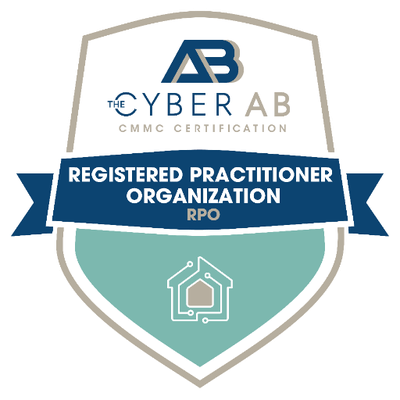Our privacy policy is located here.
Regulations and Compliance
See how risk-based Managed Detection & Response can help you with compliance — regardless of your industry
NYDFS Security Regulation FAQ
A CONVERSATION WITH RON PELLETIER, FOUNDER and CHIEF CUSTOMER OFFICER, PONDURANCE, AND RICHARD BORDEN, COUNSEL, WILLKIE FARR & GALLAGHER LLP
- The cyber regulation standards and if there are any commonalities
- What you need to do to meet SEC requirements
- The difference between privacy regulations and information security regulations
- What are the Department of Labor (DOL) guidelines, and how does it apply to cybersecurity
- How a cybersecurity provider can help you meet new security regulations
Insurance and Legal Partners
Pondurance works with legal and insurance firms, brokers and agents to help their clients improve their cybersecurity posture and reduce cybersecurity risks.
Reach out to us to learn more partners@pondurance.com
If you suspect you have an active breach, please contact us at 888-385-1720.

Keep Up With the Latest Blogs on Compliance and Regulations
Webinar
Reducing the Costs To Comply With CMMC

Successfully Navigating Through CMMC: What You Need to Know

Achieving CMMC 2.0 Compliance

Are you processing controlled unclassified information for Department of Defense clients and required to meet Defense Federal Acquisition Regulation Supplement requirements? Pondurance is here to help you achieve CMMC 2.0 compliance and better understand the gaps in your processes, capabilities, and practices.
Are You Looking for Specfic HIPAA Regulations?
Additional Resources
PCI DSS Compliance Made Simple by Pondurance
As part of Pondurance’s cyber risk and regulatory compliance assessment services, we offer a focused review of your IT systems environment to identify areas of risk and maturity as they relate to Payment Card Industry Data Security Standard (PCI DSS) compliance. READ HERE
NIST Cybersecurity Framework
The National Institute of Standards and Technology (NIST) is renowned for its significant role in setting the standard for cybersecurity in the United States. As one of the top cybersecurity companies globally, NIST offers a comprehensive framework to manage cyber risk effectively. Informed security teams rely on the NIST Cybersecurity Framework, which includes threat intelligence and cyber threat assessment, to bolster their security posture and mitigate potential threats.
The proliferation of digital technology underscores the importance of cyber risk management for organizations worldwide. By adhering to the NIST CSF, businesses can reduce cyber risk, prevent data breaches, and safeguard sensitive data. Through rigorous risk assessments, organizations can identify potential impacts on their information systems and develop a robust risk management strategy.
The NIST CSF emphasizes proactive measures to enhance cybersecurity, enabling organizations to detect and respond to cyber threats promptly. By implementing vulnerability management practices, businesses can reduce cyber risk and fortify their defenses against cyber threats.
Compliance with the NIST cybersecurity framework is essential for maintaining a strong security posture and protecting against cyber threats. Non-compliance may expose organizations to significant cybersecurity threats and jeopardize their sensitive data. Therefore, adherence to the NIST cybersecurity framework is crucial for organizations seeking to enhance their cybersecurity resilience.
In conclusion, leveraging the NIST Cybersecurity Framework is imperative for organizations striving to mitigate cyber risk and enhance their security posture. As cybersecurity consultants, we advocate for the adoption of the NIST framework to help organizations navigate the evolving threat landscape and safeguard their sensitive data.
NIST Cybersecurity Framework Full Form
To ensure organizations meet these rigorous standards, it’s essential to delve into the NIST cybersecurity framework in its entirety, understanding how it shapes cybersecurity practices and risk management strategies. The NIST cybersecurity framework, developed by the National Institute of Standards and Technology (NIST), serves as a cornerstone in the realm of cybersecurity, offering comprehensive guidelines and standards for mitigating cyber risks effectively.
At the core of the NIST cybersecurity framework is a holistic, risk-based approach that aligns cybersecurity efforts with business objectives. This approach emphasizes the importance of identifying, protecting, detecting, responding to, and recovering from cyber threats, forming the foundation of a robust cybersecurity posture.
The framework outlines specific steps that organizations can follow to strengthen their cybersecurity defenses. These steps encompass a range of functions, from identifying vulnerabilities to implementing proactive measures and responding to incidents swiftly. By following these steps, organizations can establish a cohesive defense strategy that addresses the dynamic nature of cyber threats.
Key elements of the NIST cybersecurity framework, such as the core, tiers, and profile, further enhance its effectiveness in managing cyber risks. These elements provide organizations with customizable guidelines tailored to their unique needs, facilitating a deeper understanding of cyber risks across different areas of the organization.
Central to the NIST framework is the concept of risk assessment, which enables organizations to evaluate potential vulnerabilities and threats systematically. By quantifying the potential impact on organizational operations, risk assessments inform the selection and implementation of appropriate controls for mitigating risk effectively.
Periodic evaluation of adherence to the NIST framework is essential for ensuring ongoing compliance and continuous improvement. The NIST cybersecurity framework scorecard offers a quantifiable method for assessing an organization’s level of compliance, driving efforts to enhance cybersecurity resilience over time.
Pondurance’s consulting services specialize in guiding organizations through the complexities of NIST compliance. With expertise in interpreting and implementing the NIST framework, Pondurance empowers organizations to achieve and maintain compliance while strengthening their security posture. By partnering with Pondurance, organizations can focus on their core business operations with confidence, knowing their cybersecurity needs are in capable hands.
NIST Framework Summary
The NIST Framework serves as a cornerstone for organizations seeking to fortify their information systems against cyber threats. At the forefront of this framework is the NIST Cybersecurity Framework (CSF), an essential tool designed to complement organizations’ risk management strategies and bolster their cybersecurity defenses. With its focus on five core functions – identify, protect, detect, respond, and recover – the CSF ensures organizations adopt both proactive and reactive measures to safeguard their systems effectively.
Central to understanding the CSF is grasping its core components. The NIST Cybersecurity Framework Core encapsulates key activities, outcomes, and references that delineate specific cybersecurity strategies. By providing a standardized set of cybersecurity activities and outcomes, the core facilitates clear communication among IT professionals, executives, and stakeholders.
The creation of a NIST Cybersecurity Framework Profile is vital in tailoring cybersecurity objectives to the organization’s unique risk management landscape. By aligning profiles with organizational goals, resources can be prioritized effectively, cybersecurity gaps identified, and a roadmap for risk reduction established.
Implementing the NIST Cybersecurity Framework demands meticulous attention and customization to fit the organization’s vision, risk tolerance, and resource availability. Its flexible approach allows for the identification of inconsistencies and areas for improvement, ensuring robust protection against cyber threats.
Examining a practical example illustrates the framework’s efficacy in action. From risk identification to response and recovery strategies, the CSF guides organizations through a comprehensive cybersecurity lifecycle, ensuring resilience against cyberattacks.
Compliance with NIST standards goes beyond legal obligations; it is integral to a successful business strategy. By adhering to NIST frameworks and controls, organizations mitigate cyber risks, bolster cybersecurity postures, and instill stakeholder confidence in the integrity of their information systems. Consulting services, such as those offered by Pondurance, play a crucial role in keeping organizations secure, compliant, and aligned with the NIST framework, thereby safeguarding their digital assets and ensuring long-term success.
The NIST Framework stands as a guiding light in the ever-evolving landscape of cybersecurity, providing organizations with a robust structure to navigate the complexities of digital threats. Its significance transcends mere regulatory compliance, serving as a beacon of best practices and strategic imperatives for safeguarding information assets in today’s interconnected world.
One of the defining features of the NIST Cybersecurity Framework (CSF) is its adaptability to diverse organizational contexts. Whether a multinational corporation or a small business, the CSF offers scalable solutions that can be tailored to suit specific needs and resources. This flexibility is crucial in addressing the unique challenges and constraints faced by organizations across industries and sectors.
At its core, the CSF promotes a risk-based approach to cybersecurity, emphasizing the identification, assessment, and mitigation of potential threats. By integrating risk management principles into cybersecurity practices, organizations can allocate resources effectively, focusing on areas of greatest vulnerability and exposure. This proactive stance not only strengthens defenses but also enhances resilience in the face of emerging threats.
The CSF’s emphasis on collaboration and communication is another key aspect that sets it apart. By fostering dialogue between IT professionals, executives, and stakeholders, the framework promotes a shared understanding of cybersecurity priorities and objectives. This alignment is essential for achieving buy-in across the organization and driving meaningful change in cybersecurity posture.
Furthermore, the CSF encourages continuous improvement through regular assessment and feedback loops. By evaluating cybersecurity performance against established metrics and benchmarks, organizations can identify areas for enhancement and refinement. This iterative process ensures that cybersecurity strategies remain adaptive and responsive to evolving threats and business requirements.
In today’s hyper-connected digital landscape, the importance of cybersecurity cannot be overstated. Data breaches, cyber-attacks, and other security incidents can have far-reaching consequences, impacting not only financial stability but also reputation and trust. By embracing the principles and practices espoused by the NIST Framework, organizations can proactively mitigate these risks, safeguarding their assets and ensuring long-term success in an increasingly digital world.
Related Topics
- Penetration Testing Vs Vulnerability Assessment
- Cybersecurity Compliance Framework
- Cybersecurity For Small Business
- Soc As A Service
- Cybersecurity Compliance
- What Is Penetration Testing
- Nist Cybersecurity
- Cybersecurity Penetration Testing
- Vulnerability Scan
- Cybersecurity Resources
- Cybersecurity Risk Assessment
- Nist Compliance
- Cybersecurity Risk Management
- Cybersecurity Assessment Tool
- Cybersecurity Healthcare
- Cybersecurity Consulting Firms
- Cybersecurity Assessment
- Risk Based Cybersecurity
- How To Prevent Malware Attacks
- Pci Dss
- Cybersecurity Consultant
- Nist Csf
- Penetration Testing Companies